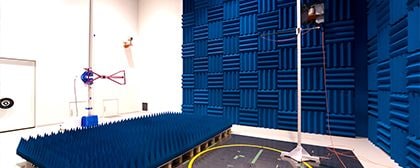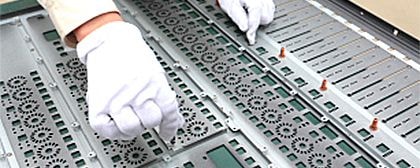Quality Management
Yamaha Quality Control: Quality Management
Yamaha's Quality & Engineering Planning Division handles testing requested by the various product development divisions in accordance with the Yamaha Quality Management System. The Yamaha Quality Management System for professional audio products conforms to ISO9001:2015 standards and is certified by BV (Bureau Veritas — an internationally recognized certification company based in France). Its standards are applied and maintained from product planning through development and production to sales. The Yamaha system, however, has been customized to even more stringent criteria that reflect some very ambitious internal quality goals. The Quality Management System applies not only to operations in Hamamatsu, Japan, but to all other Yamaha pro audio factories in Japan and Indonesia as well. The all-inclusive scope of the system ensures that the same policies, objectives and standards are shared by all Yamaha pro audio staff and facilities, no matter where they may be, so that the required level of product and service quality can be maintained on a worldwide scale.
Here's a brief summary of some of the main items regulated by the Quality Management System:
Compliance with Laws and Regulations
All products must comply with the laws and regulations of the countries in which they will be sold. These are basic but essential requirements that include the safety and environmental considerations mentioned below.
Safety
Most countries have strict fire and shock safety standards for electronic devices. Yamaha's internal standards are even stricter.
Environment
Many environmental issues can be categorized under "safety," but most also have more far-reaching implications for the environment at large. Europe's RoHS Directive (the restriction of the use of certain hazardous substances in electrical and electronic equipment), for example, bans new electrical and electronic equipment containing more than agreed levels of lead, cadmium, mercury, hexavalent chromium, polybrominated biphenyl (PBB) and polybrominated diphenyl ether (PBDE) flame retardants.
Electromagnetic Compatibility
EMC (Electromagnetic Compatibility) includes both EMI (Electromagnetic Interference: the effect a product might have on other electronic devices) and EMS (Electromagnetic Susceptibility: the susceptibility of the product to interference from other electronic devices).
Performance
Since there are no defined standards for characteristics such as sound quality, this is an area in which internal criteria must be applied. Yamaha sound quality is based on more than a century of manufacturing musical instruments, more than 35 years manufacturing analog sound reinforcement equipment, and more than 20 years making industry-leading digital mixing consoles.
Reliability and Durability
To most professional users reliability and durability are another aspect of "performance," and are equally as important as sound quality. Yamaha products must perform reliably in continuous use under a wide range of sometimes-adverse conditions.
Usability
Interface logic and design, for example, has a huge influence on how easily and intuitively a product can be used.
Visual Design
The visual appeal of a product is undoubtedly an important aspect of its overall quality. But there are also many areas in which appearance and performance are interdependent, so care must be taken to achieve the optimum balance.
Transportation and Storage
In addition to transportation and storage of products in their original packaging when they are shipped from the factory, professional equipment must be designed for easy handling by the end user, and it must be able to withstand repeated unloading, setup, loading, and transport in everyday use.
Maintenance
This item includes the serviceability of the products themselves as well as the response and quality of the support and service provided by Yamaha.
The Ultimate Goal
In addition to the obvious need for absolute safety, the ultimate goal of the Yamaha Quality Management System is total customer satisfaction. Total customer satisfaction can only be achieved by providing a stable supply of products of the highest quality at the lowest possible cost along with responsive and effective support. Easier said than done. Like the products themselves, quality management must continually evolve to keep pace with continuously changing markets, user needs, and technology. The Yamaha Quality Management System is right at the leading edge.
The Yamaha Quality Support Center
The Quality Support Center is a world-class testing laboratory that houses some of the most advanced and sensitive testing facilities for electronic devices available anywhere.
Production
Production can only begin after the final engineering samples have passed all tests and have been fully approved by the Quality Support Center as well as all of the involved development groups. But that is by no means the end of quality management. Monitoring and testing continue throughout the manufacturing process to ensure that quality goals are maintained.








